Print out your own walking tour of LeDroit Park
I have led historic walking tours of LeDroit Park for five years as part of the annual WalkingTown DC event. You can download the guide I wrote and related images and walk the tour yourself. The tour starts and ends at the arch at 6th and T Streets.
- Main guide text
- Images A-M, and S (print in black and white)
- Images N-R, and T (print in color)
The tour, when spoken to a crowd, takes about 90 minutes. If you read it silently, you can finish it faster.
If you want to learn about the architectural details of LeDroit Park, e.g. what makes a house Second Empire, check out the excellent LeDroit Park Conserved, a preservation book about LeDroit Park produced for the District government in the 1970s.
Turn down that Prince music!
In 1998 LeDroit residents wrote an open letter to incoming Mayor Anthony Williams to complain about Prince and the House of Secrets (507 T Street).
Clean Up Street in LeDroit Park
We live amongst trash and filth in the 500 block of T Street NW, in the historic area of LeDroit Park. We are proud of our aged homes and the famous black Americans who lived in them. But when we turn the corner at Sixth and T streets, we are appalled at the piled garbage and trash. When we have special guests at our homes, we must hire a private company to remove the trash so that we will not be embarrassed. We also have a problem with the parties held in our neighborhood at an after-hours nightclub, the House of Secrets. It’s no secret that the last two times The Artist Formerly Known as Prince performed in the area, he had a party that went on from 1 a.m. until 5 a.m. on a Tuesday morning. The purple buses roared down our one-way street and unloaded noisy passengers. The limousines, cars and taxis pulled up, double parked and blocked our driveways. How is it that an after-hours establishment is allowed to exist in our neighborhood? We, law-abiding citizens, do not want this nightclub. We do not want to party. We want to sleep.
Lois Wiley and LilliAnn Williams, T Street NW
This letter appeared with other residents’ letters to Anthony Williams, who officially became mayor two days later. The House of Secrets has hosted parties for decades, but has been relatively quiet since 2013, when two people were stabbed outside the house during a party.
The Alcoholic Beverage Control Board investigated the incident to decide whether it should decline future temporary liquor license requests for the house. Although nightclubs and bars are not permitted in that location by zoning, the city does issue occasional temporary event licenses, usually for one specific day. Both the LeDroit Park Civic Association and ANC1B submitted letters protesting future licenses.
Washington Post features an alley dwelling renovation in LeDroit
How do you convert a rundown carriage house into a compact apartment? One LeDroit Park resident did it with $50,000 and some elbow grease. The converted unit, which the owner rents on airbnb, is nestled in the quiet alley that connects Fourth and Fifth Streets just south of T Street.
I’m friends with the owner and he gave me a tour as he was starting the renovation two years ago. It’s great to see such a drastic transformation. Read the full story in the Washington Post.
110 units proposed for Wiltberger and T Streets
UrbanTurf reports that a 110-unit apartment building may be coming to T Street next to the Howard Theatre. The project would replace the warehouse on Wiltberger Street and the stretch of buildings on T Street from Flava to Zenebech Restaurant (see photo below).
The project would also include 8,000 square feet of retail and 50 parking spaces. According to UrbanTurf, the project developer plans to build the project matter-of-right, meaning the project will not require any historic design review and will not require zoning relief for things like height, rear yards, parking, etc.
The map below shows the zoning context of the project site.
The site lies just outside the LeDroit Park and Greater U Street Historic Districts (brown dotted area). The site also lies within the C-2-B zone, which allows
- office, retail, and residential uses
- maximum lot occupancy of 80% for residential uses and 100% for all other uses*
- maximum FAR of 3.5 for residential uses and 1.5 FAR for other permitted uses**
- maximum height of 65 feet.
- rear yard requirement of fifteen (15) feet
- 1 parking space for every 3 housing units + 1 parking space for every 750 sq. ft. of retail over 3,000 sq. ft.
As long as the project stays within these constraints, the developer is entitled to receive building permits.
* This calculation applies to different floors of the building based on the floor’s use. If you have ground-floor retail, you can cover 100% of the lot for that floor. If there are residential floors above that, each residential floor cannot cover more than 80% of the lot.
** This calculation is separated by use, meaning you can have 3.5 FAR of residential uses on top of 1.5 FAR of commercial uses. This would give the building a total of 5.0 FAR.
DDOT will improve T Street in early May
ANC Commissioner Brian Footer informed me that DDOT will apply a slurry seal to T Street from Second Street to Sixth Street one day from May 1 to May 6. The sealant fills cracks and slows asphalt deterioration. During the special day that DDOT applies the sealant, parking will be prohibited on T Street and driveways will be inaccessible from 8 am to 5 pm. DDOT will post notices 72 hours before the work begins.
DDOT applied the same treatment to Fifth Street back in 2013. Here are some photos of the process and the results.
DDOT to plant 16 trees in LeDroit Park this fall
Fall is a good time to plant trees. DDOT has released its tree-planing map and LeDroit Park is slated to receive 16 trees. The agency only plants trees in public space, meaning the trees will be planted in the tree boxes or planting strips between the sidewalks and the curbs.
- 501 T Street
- 406 T Street
- 324 T Street
- 318 T Street
- 471 Florida Avenue
- 1934 3rd Street
- 1842 2nd Street
- Opposite 1915 2nd Street
- Opposite 1919 2nd Street
- 1948 2nd Street
- 1929 2nd Street
- 329 Rhode Island Avenue
- 455 Florida Avenue
Sweetgum (Slender Silhouette cultivar)
- 453 Florida Avenue
- Opposite 432 Oakdale Place
Cherry tree (Snow Goose cultivar)
- Southwest circumference of Anna Cooper Circle
UNCF and restaurants open at the Shaw Metro
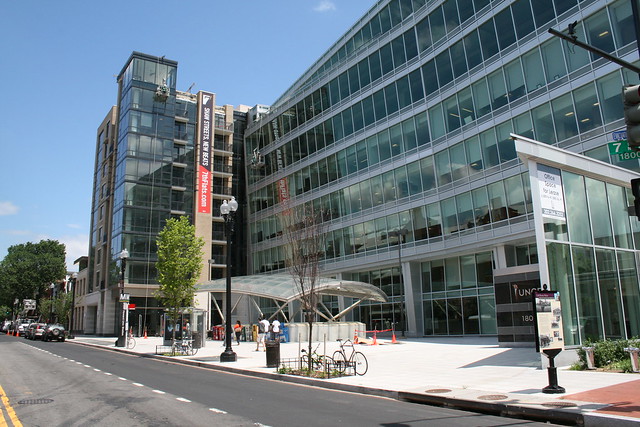
The much-anticipated Progression Place, the development at the Shaw Metro is nearing completion. The United Negro College Fund (UNCF) moved into the office building back in October, purchasing half of the 100,000 square feet of office space. There is no word yet on who the other office tenants will be.
Not your father’s sherry
The retail spaces are opening up, with sherry bar Mockingbird Hill (1843 7th St NW) taking the lead on June 7th. Mockingbird Hill is the brainchild of mixologist Derek Brown, his mixologist wife Chantal Tseng, and business partner Angie Salame. Mr. Brown also owns The Passenger and The Columbia Room on 7th Street opposite the Convention Center. Ms. Tseng comes to Mockingbird Hill from the Tabard Inn, where she ran the bar.
Mr. Brown and Ms. Tseng are the powerhouse couple in the DC cocktail scene. The husband and wife duo is determined to introduce a sherry craze in the District. The bar features over 50 types of sherry and offers several types of carved ham. Mockingbird Hill is inspired by the ham and sherry bars of Spain, but the interior exposes brick and hangs vintage filament bulbs like many of the hip bars around town.
Can Mr. Brown and Ms. Tseng sell enough sherry to people other than British retirees to stay in business? Only time will tell, but the husband and wife team is also planning two adjacent ventures, including an oyster bar delightfully named Eat the Rich, slated to open at 1839 7th Street next month. Chesapeake Bay oysters were once abundant and cheap, making 19th century Washington a hotbed of oyster restaurants.
Another business is brewing
Around the corner at 624 T Street, Nathan Zeender, John Snedden, and Thor Cheston are fitting out the former Cafe Manowaj space to open the Right Proper brewpub. The microbrewery will serve Belgian-style ales and sour beers and allow customers to carry out their beers in growlers.
We will update you as we hear about more retail tenants opening in the building. Until then, admire Right Proper’s storefront copperwork.
Storm floods streets and basements of Bloomingdale
During torrential downpours the Bloomingdale neighborhood experiences flooding. Yesterday evening’s storm flooded numerous Bloomindale basements and the intersection of Rhode Island Avenue, T Street, and First Street NW.
The Boundary Stone restaurant (116 Rhode Island Avenue NW) posted a photo of a flooded Rhode Island Avenue NW.
Why did this section of the street flood? DC Water, which runs the water pipes, sewers, and storm drains, blames the lack of pipe capacity in Bloomingdale.
A closer look at the 1861 Boschke map of the District of Columbia reveals that the northern reaches of Tiber Creek flowed right through Bloomingdale. In fact the creek flowed right where Rhode Island Avenue flooded at T Street NW.

Boschke map with modern streets superimposed
Whether the creek still flows underground in this location is something I will leave to experts. However, creeks, like all water, flow to the lowest point on the land. The creek’s former presence at this location suggests that the terrain slopes downward on all sides, directing rainwater to this critical flood point.
Ward 5 Councilmember Kenyan McDuffie (D) was on the scene and DC Water has promised to brief him soon on their Bloomingdale flood solution, which they say is on the way. Though this degree of flooding is rare, Bloomingdale residents will surely welcome and demand a permanent fix.
City grants license for All Souls, slams opponents
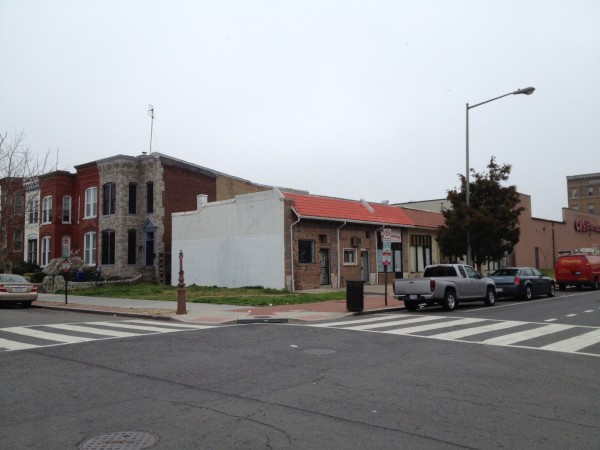
The Alcoholic Beverage Control (ABC) Board will grant a license for All Souls, the proposed restaurant to occupy the long-vacant storefront at 725 T Street. All Souls became a lightning rod for unexpected opposition in March, drawing crowds and TV news coverage to its liquor license hearing. The objections covered the usual grounds: too much noise late into the night, too many drivers looking for parking, too many chances for general disorder.
The proprietor had long before agreed to only serve alcohol inside and only serve after 5 pm.
The most unusual objection, however, was that it is harmful for children to look across the street and view adults consuming alcohol. The objection seemed like a quaint, Puritanical reaction incongruent with a diverse, secular city.
DC law does, however, recognize that alcohol-serving establishments near schools merit at least some level of extra scrutiny. In fact the law prohibits the issuance of liquor licenses
within 400 feet of a public, private, or parochial primary, elementary, or high school; college or university; or recreation area operated by the District of Columbia Department of Parks and Recreation (DC Code §25-314(b)(1)).
The protestors, legally referred to as “protestants”, thought this provision would damn the All Souls application. The same section of the DC Code, however, lists 10 exceptions to the 400-foot rule, including this important one:
The 400-foot restriction shall not apply if there exists within 400 feet a currently-functioning establishment holding a license of the same class at the time that the new application is submitted. (DC Code §25-314(b)(3))
The board found that the Mesobe market in the orange building at 1853 7th Street NW is indeed already within 400 feet of the school. The distance measurement, the board’s ruling stated, “‘shall be the shortest distance between the property lines of the places.’ 23 DCMR §101.1 (West Supp. 2012).”
The existence of Mesobe within 400 feet of the school provides a precedent that satisfies the exception for All Souls, the board decided.
With that argument down, the board addressed the general assertion that it is unsafe for children to view adults consuming alcohol. Here is where the board delivered its most scathing criticism of the objectors:
Finally, we reject the Protestants’ unsubstantiated assertion that the mere sight of the Applicant’s tavern will be detrimental to the students of Cleveland Elementary School… Indeed, if we accepted the Protestants’ argument that the mere sight of adults in a tavern consuming alcohol is harmful to children, the Board would similarly have to ban children from:
- entering restaurants that serve alcohol to patrons;
- attending sporting events where alcohol may be consumed by adult fans;
- eating dinner with their parents if wine is served with the parents’ meal;
- participating in religious ceremonies where wine is part of the service; and
- walking through neighborhoods with large concentrations of liquor-serving establishments during the daytime, such as Adams Morgan and U Street.
The board further described the objection as “unworkable, unreasonable, and not in accordance with current societal practices.”
There are a few important lessons from this case. The most important is that District boards don’t always cave to the flimsily argued demands of a vocal few. A common complaint, especially among the business community, is that DC’s various boards, such as Zoning Commission, the Board of Zoning Adjustment, the Historic Preservation Review Board (HPRB), the Old Georgetown Board, the ABC Board, etc., exercise their discretion in ways that are too often inconsistent or outright bizarre.
The most frustrating experience with these boards is encountering unsupported opinions. In cases before the HPRB, many opponents argue that a proposed building is “incompatible” with the historic district while they fail to elaborate why it is allegedly incompatible. Georgetown resident Topher Matthews explained this sentiment that I have also encountered when following historic preservation cases:
Time and time again, neighbors use the historic preservation design review process to object to the size of the project rarely out of any genuine concern for the preservation of the neighborhood’s historic character but rather because they simply just don’t like the project. The basis for the complaints would be no different than if the project were in a brand new development with no historic character: it blocks my view, it’s too big, you’ll be able to see into my garden, et cetera.
In the All Souls case, the school proximity argument failed to establish harm to students to a degree that would warrant killing off a local business. It is a non sequitur to many people that children are harmed by catching a glimpse of adults across the street sipping wine at 5 pm. Merely believing that something is true doesn’t necessarily make it true. In rejecting this claim, the ABC Board made the right decision.
The entire licensing process, which was unusually protracted in this case, certainly cost the proprietor of All Souls a hefty sum in legal fees. When the proprietor attended community meetings on his proposed license, he usually had his attorney with him to address the fine legal distinctions, especially as it applied to the somewhat complicated 400-foot rule.
In fact I pitied the man. All he wanted to do was open up his small businesses. His modest license request unleashed the histrionic vitriol of a few strident Furies who spoke as though he were defiling the sanctity of childhood itself!
The board ratified a voluntary agreement between All Souls and three neighbors uninvolved in the school-proximity protest. The text of this side agreement is not currently available, but if it is like most other voluntary agreements, it likely negotiated closing hours and restrictions on indoor music volume, not moral arguments about child psychology and societal vice.
The good news is that even the school-proximity opponents who lost their case actually won. Cleveland Elementary School is a great school and will continue to be a great school long after All Souls has poured its inaugural beer. The conversion of the vacant storefront into an occupied business will deter the loitering and drug dealing along that block of T Street and will remove a visible physical blight from the neighborhood.
The neighborhood and the school will both be better off once All Souls opens.
Just who was Ernest Everett Just?
An academic’s prestige is usually measured by the degree to which his peers admire his work. Any job where success depends on reputation is bound to be a difficult and political career. Howard biologist Ernest Everett Just (1883-1941), who lived at 412 T Street in LeDroit Park, faced a constant struggle for recognition for his groundbreaking work in biology in the early 20th century.
I occasionally give history tours of the neighborhood. My tour touches on two major themes: the neighborhood’s eclectic architecture and the prominent black Americans who lived in LeDroit Park. I had never heard of Just before moving to LeDroit Park, but in researching topics for my tour I came across a 1995 postage stamp commemorating him. This makes him the first of two LeDroit Park residents featured on postage stamps.
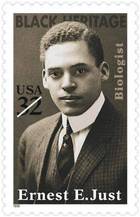
Two months ago, a neighbor who was a researcher at Howard University recommended Kenneth Manning‘s 1983 biography of Just. He assured me that the book, entitled Black Apollo of Science, detailed all the administrative problems at Howard that still exist to this day.
I picked up the book hoping to read historical accounts of LeDroit Park while Just lived in the neighborhood. Though there was very little about the neighborhood, the book provided interesting stories about Howard University’s administrative and financial troubles during the early 20th century.
The book was light on LeDroit Park and Washington because Just himself increasingly disliked teaching at Howard and the pervasive racism he faced living in the United States. In the 1920s, midway through his career, Just began to spend more time conducting research at research institutes in Berlin; Naples; and Roscoff, France. He deliberately avoided returning to the Marine Biology Laboratory in Woods Hole, Massachusetts, where he felt he was socially isolated because of his race. Just saw Europe as an escape from racism he faced at home.
In Europe Just could finally attend the same operas he had seen advertised in Washington’s whites-only venues and he could travel and book hotels without worrying that his reservations would be rejected due to Jim Crow.
Whether Just was pursuing his PhD at the University of Chicago or conducing research in Massachusetts or Europe, his wife and children remained in LeDroit Park at 412 T Street. But as Just eventually grew apart from the United States, he also grew apart from his wife. Just took several lovers in Europe during his research stints and he eventual filed for divorce from his wife Ethel in the late ’30s. This was a formality, though, as their love had died many years ago.
Though Just was in France at the time of the 1940 census, the census ledger lists him as the absent head of household at 412 T Street.
The Just family stood out for its educational attainment. Notice that in column 14, Just is listed as having completed eight years of college, an outstanding accomplishment even by today’s standards. His wife had finished six years of college, his son four, and his daughter Maribel, aged 17, was in her first year of college.
Out of pure luck, Just was listed on line 68, which was one of two lines per page that the Census Bureau selected for supplmentary questions.
Here Just stands out again. Though most LeDroit residents were listed as maids, porters, or laborers, Just’s profession is listed as “Zoology professor” at Howard University.
Just’s life was not easy. He grew up in poverty and his father died when Just was a child. Just’s mother was a teacher who valued his education dearly and she sent him as a teenager to a boarding school in New Hampshire. During his time at boarding school, his mother died, leaving Just orphaned but independent.
After boarding school, he proceeded to Dartmouth to study classics and biology, the field to which he devoted his entire career. Since few universities at the time would hire black researchers or professors, Just took a position at Howard University and in 1912 became the head of Howard’s Department of Zoology.
The Howard position was Just’s main source of income for the rest of his life and he used it, along with a few private grants, to fund his research in Massachusetts and Europe. Though Just kept his position at Howard until his death, he spent many semesters and summers studying marine biology far away from Washington. Howard, it seems, was only a source of income for Just, as he frequently battled with the university’s administration for more equipment, more funding, and more research time.
Howard’s presidents, especially Mordecai Johnson, demanded that Just focus less on research and more on teaching and building a graduate zoology program.
Johnson wasn’t the only person pressuring Just. White philanthropists who wanted to raise academic achievement and living standards of American blacks funded Just’s work with the goal that he would train aspiring black scientists and doctors. Their hope was that Just would train black biology students so they could study medicine and return to the rural south where white doctors would not treat black patients.
Just, however, wanted philanthropic funding to support his biological research efforts, not his teaching efforts. Just preferred research and appeared far more interested in advancing the human understanding of cell biology.
Old letters Manning uncovered reveal that Just held a low opinion of Howard undergraduates during his tenure. Just thought teaching biology to them was a waste of time and would distract him from important research.
To teach or to research? This is an old academic controversy. Many professors prefer to conduct research because they find it more intellectually satisfying and because it builds their careers, expertise, and reputations. At universities that rely heavily on tuition fees for their income, administrators realize that teaching is an important source of income.
For Just, the written correspondence between him and various philanthropies shows that because he was black, he was expected to carry the herculean task of advancing both the human understanding of biology and the welfare of his race— a burden his white benefactors did not place on white scientists. These expectations, though well intentioned, continually hindered Just’s career as his appeals for research grants rarely bore fruit. Various foundations and Howard administrators urged Just to spend more effort building a biology program and producing trained biologists.
Just found a warmer reception in Germany, Italy, and France, where scientists were more eager to collaborate with him and build on his work. While in Europe, Just dated several women. He even established residence in Latvia briefly so he could quickly file for divorce from his wife in Washington. He eventually decided to mary his German mistress and start a life in Europe, even if it meant resigning his post at Howard and living in penury in Europe.
Failing to win grants, though, Just held onto his Howard position as his sole source of income. Just’s time in Europe was productive. He published his most renowned works on cell biology and cell fertilization during this self-exile.
His new-found haven across the Atlantic didn’t remain peaceful for long. Though he had tried to escape racism in the United States, Nazi violence had made Berlin inhospitable. In Italy, Just’s appeals to Mussolini for research funding went nowhere and Italian biology conferences became fascist propaganda events.
Just’s final European post in France came under Nazi control and Just was ordered to leave. The advancement of fascism eventually made this European exile untenable. Sadly, everywhere Just went, some virulent -ism— racism, fascism, Nazism— eventually caught up with him.
Just returned to the United States with his new wife and newborn child. His new wife and child settled in New Jersey, but Just had to return to work for pay at Howard. Suffering from pancreatic cancer, Just stayed with his sister Inez at 1853 3rd Street, here in LeDroit Park. His health was in rapid decline and in October 1941 Just died.
Despite having overturned a ruling theory of cell fertilization, Just never fully received the professional recognition he desired and deserved. He was always tied to Howard, even though he wanted desperately to leave to focus solely on research. Howard tied him to Washington, a city whose segregation degraded him. Washington also tied him to a wife he no longer loved.
Manning’s book is very well researched and combs through many of Just’s letters to colleagues, mentors, friends, and lovers. It tells a fascinating account of race relations in America, the history of biology research, and one man’s unhappy task facing down all these problems.
Manning was able to weave these threads of science, race, academia, and Just’s personal life into a unified and compelling work accessible to the general reader. Happy endings are the work of fiction writers; Just’s story is more poignant because it recounts a life marked by great successes and great disappointments.
 Black Apollo of Science: The Life of Ernest Everett Just
Black Apollo of Science: The Life of Ernest Everett Just
By Kenneth Manning
1983, Oxford University Press. 330 pages.
[Amazon] [DC Public Library]


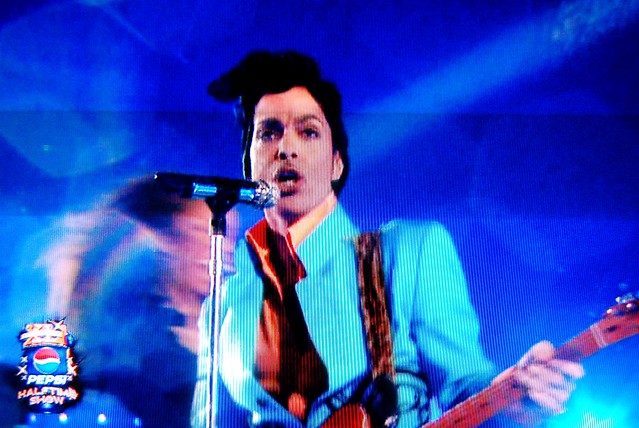

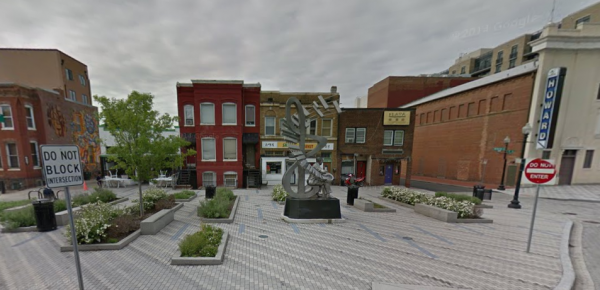



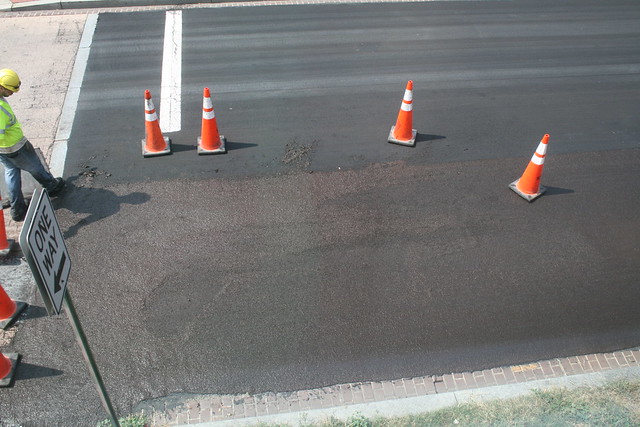













Recent Comments